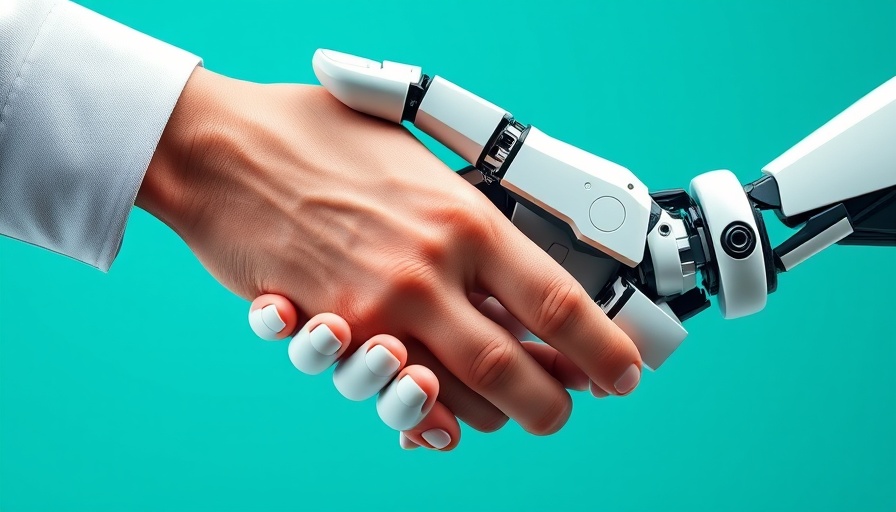
Understanding the Future of Work in an AI-Driven World
As artificial intelligence (AI) continues to evolve, workers find themselves asking how they will fit into this changing landscape. Will machines take all the jobs, or will they create new opportunities for human workers? Amazon's recent announcement about its 'Vulcan' robot provides a glimpse into the new roles that may emerge as automation and robotics become more prevalent in the workforce.
The Rise of Robotics in Warehousing
Amazon has made headlines once again with its introduction of the Vulcan robot, designed to assist with tasks in its warehouses. This robot can lift heavy items and reach high shelves, taking over some of the more physically demanding duties typically handled by warehouse workers. Andy Jassy, Amazon's CEO, emphasized the safety enhancements these robots bring, minimizing the risk of injury for human employees. However, the technology also raises critical questions about the future of those workers. Will the workforce adapt to these changes, and what training will be necessary as these new roles develop?
Creating New Job Categories
Amazon has suggested that, rather than eliminating jobs, robotics and AI might lead to the creation of entirely new categories of work. The introduction of Vulcan is said to have already given rise to roles such as robotic floor monitors and onsite reliability maintenance engineers. While technology can perform numerous tasks, the complexity of managing and maintaining these robots requires a human touch, indicating a shift from manual labor to more technical roles in the logistics industry.
Job Retraining and Future Opportunities
To ease the transition into this new working environment, Amazon has initiated a retraining program aimed at teaching existing employees skills in robotics maintenance. While not every worker may wish to pursue a technical role, these programs enable many to evolve alongside technology rather than fall victim to it. The ability to gain new skills will be vital in the age of automation, presenting workers with pathways to secure employment even in an AI-driven environment.
The Human Factor in an Automated World
A significant concern raised by critics is the potential for a disparity between those who can adapt to the rapid technological changes and those who cannot. While companies like Amazon focus on their retraining programs, it is essential for all industries to consider their role in equipping workers for the future. Not having access to such training or the desire to engage with new technology can leave a segment of the workforce vulnerable, underlining the need for systemic support mechanisms.
Insights from the World Economic Forum
The World Economic Forum predicts that while 92 million jobs may be displaced due to technological advancements, 170 million new jobs could also be created. This statistic reflects the dynamic nature of labor markets in an evolving economy. As automation rises, industries need to embrace change and support their workers in navigating it, fostering a culture of learning and adaptability.
Preparing for the Job Market of Tomorrow
As these trends converge, it remains vital for both individuals and organizations to prepare for the future. Workers may need to embrace lifelong learning as a stable career strategy, continuously evolving their skill sets to stay relevant in the job market. Investing in training insights, such as those offered by tech giants, can be a lead toward sustained employment in an ever-changing landscape. Similarly, businesses must prioritize their workforce’s continuous development, enabling them to adapt to new tools and technologies.
Conclusion: Navigating an AI-Enhanced Employment Landscape
The introduction of robots like Vulcan illustrates the broader trends reshaping the employment landscape in the wake of advanced technology. While concerns about job displacement are real, the potential for new roles and enhanced job satisfaction in safer working conditions offers a silver lining. As we look to the future, it is imperative for companies and workers alike to engage in ongoing dialogues about adaptation and growth, ensuring that human ingenuity and empathy remain at the forefront of our evolving workplaces.
Getting involved in training initiatives and exploring new opportunities within an AI-enhanced workplace can set a foundation for a dynamic career path. As we transition into this new reality, staying informed on tech industry trends will be crucial.
 Add Row
Add Row  Add
Add 



Write A Comment